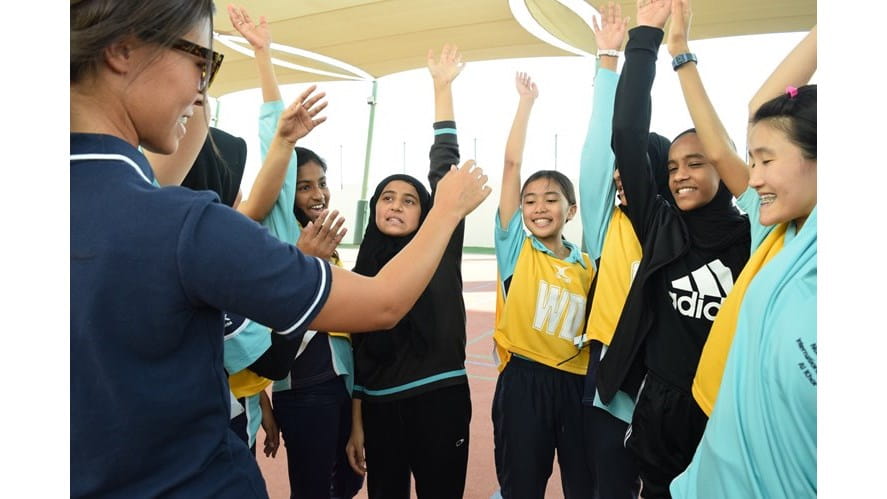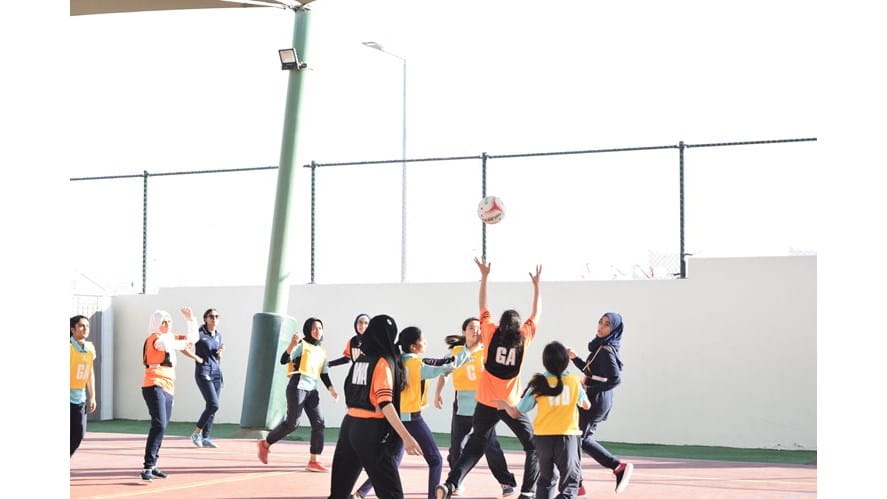We use cookies to improve your online experiences. To learn more and choose your cookies options, please refer to our cookie policy.
Admissions Are Now Open for 2025 - 2026!
Please contact our Admissions team for next steps.


With the Physical Education curriculum here at NAISAK, we have been looking at ways of improving our students’ self-efficacy and confidence in a range of sports and physical activities. One way in which we have explored this has been to develop the students’ deeper conceptual understanding of some of the key concepts that can be seen within all sports.
The focus on developing this self-efficacy is so that all of our students have the confidence to participate in a range of sporting and physical recreational activities, not only whilst they are at school, but as they leave us and start to make further active choices in regards to their own leisure time.
By focusing on deeper learning and the identification of big ideas, we aim to move away from students only being able to memorize, retain and demonstrate sports-specific skills and information; instead empowering them to think about why the learning is taking place and ultimately to be able to transfer their understanding into new and ever-increasing complex contexts.
As sport is a cultural phenomenon, everyone’s exposure to sport is different based on their prior experiences and influences. Therefore, to create a Physical Education curriculum with sport as the end outcome will only serve those few who, in the future, make an active choice to pursue the sports that are available as part of our curriculum. Furthermore, within an international school setting, many students may be transient throughout their life, so the choices that they have regarding sports and physical activity may depend upon the countries and cultures in which they live or will live in the future.
For example, because I grew up in Yorkshire in the North of England, as well as due to family influences, the sport which had the greatest influence on my life was Rugby League. As I moved away from Yorkshire, the opportunities to play the sport that I grew up with started to diminish. Therefore, having the ability to transfer my knowledge, skills and understanding across into new sports, some of which I had never had the opportunity to play previously, has been invaluable in allowing me to continue to participate in sport as I have grown older.
One way in which we have developed the deeper conceptual understanding of our students this term can be seen within the Year 8 Volleyball unit that has just been completed. Within this unit, the students have started to develop their understanding of timing, space & force within the context of Volleyball. For example, through the conceptual lens of timing, the students have examined the conceptual understanding statement - “our actions are determined by how well our movements are controlled with respect to intrinsic or extrinsic information”.
Through various activities, the students decided that the quality of their movements was determined by how ready they were to receive the ball. They concluded that if they arrived ahead of the ball, they had a better opportunity to have the best body position to execute the correct type of pass. Once this was decided upon, they started to examine how they could move best so that they arrived ahead of the ball. They explored the ideas of how to anticipate the movement of the ball and how to detect this movement as early as possible.
Through several activities, they looked at what information they were receiving whilst playing a game from a visual, auditory and sensory perspective. They decided that the earlier they could detect this information, such as the body position of their opponents or the verbal communication from their teammates, would determine how they fast they could react to ensure they were in the most appropriate position to receive the ball.
From a more theoretical perspective, this deeper understanding was built upon by engaging the students with the information processing model, and how this model illustrates how decisions are made with regard to which skills to execute and when to execute them. This model also shows them the value of providing constructive feedback when first learning a new skill.
By developing the students’ deeper conceptual understanding, we hope that they use this as a building block from which they will further develop their understanding of the concept of timing so that when we move onto other units within Physical Education they will be able to apply and transfer this deeper understanding within these new contexts.
The students so far have been very receptive to this approach, and as a department, we are very keen to see the students develop their knowledge, skills and understanding further as we move through the year.
Mr. Todd Wain
Director of Sports